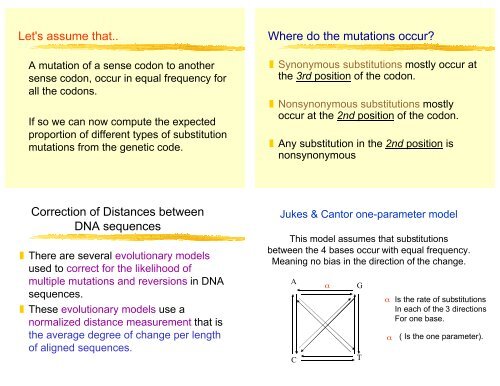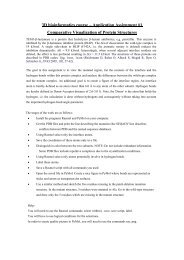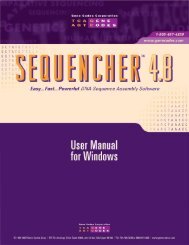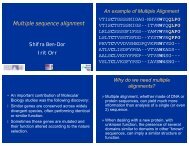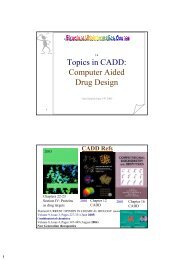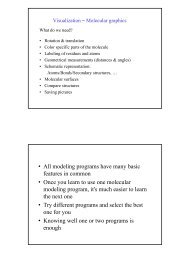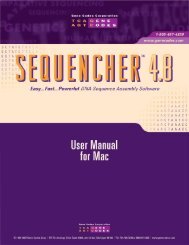Introduction to Phylogenetic Analysis
Introduction to Phylogenetic Analysis
Introduction to Phylogenetic Analysis
You also want an ePaper? Increase the reach of your titles
YUMPU automatically turns print PDFs into web optimized ePapers that Google loves.
Let's assume that..<br />
A mutation of a sense codon <strong>to</strong> another<br />
sense codon, occur in equal frequency for<br />
all the codons.<br />
If so we can now compute the expected<br />
proportion of different types of substitution<br />
mutations from the genetic code.<br />
Correction of Distances between<br />
DNA sequences<br />
There are several evolutionary models<br />
used <strong>to</strong> correct for the likelihood of<br />
multiple mutations and reversions in DNA<br />
sequences.<br />
These evolutionary models use a<br />
normalized distance measurement that is<br />
the average degree of change per length<br />
of aligned sequences.<br />
Where do the mutations occur?<br />
Synonymous substitutions mostly occur at<br />
the 3rd position of the codon.<br />
Nonsynonymous substitutions mostly<br />
occur at the 2nd position of the codon.<br />
Any substitution in the 2nd position is<br />
nonsynonymous<br />
Jukes & Can<strong>to</strong>r one-parameter model<br />
This model assumes that substitutions<br />
between the 4 bases occur with equal frequency.<br />
Meaning no bias in the direction of the change.<br />
A<br />
C<br />
α<br />
G<br />
T<br />
α<br />
Is the rate of substitutions<br />
In each of the 3 directions<br />
For one base.<br />
α ( Is the one parameter).


